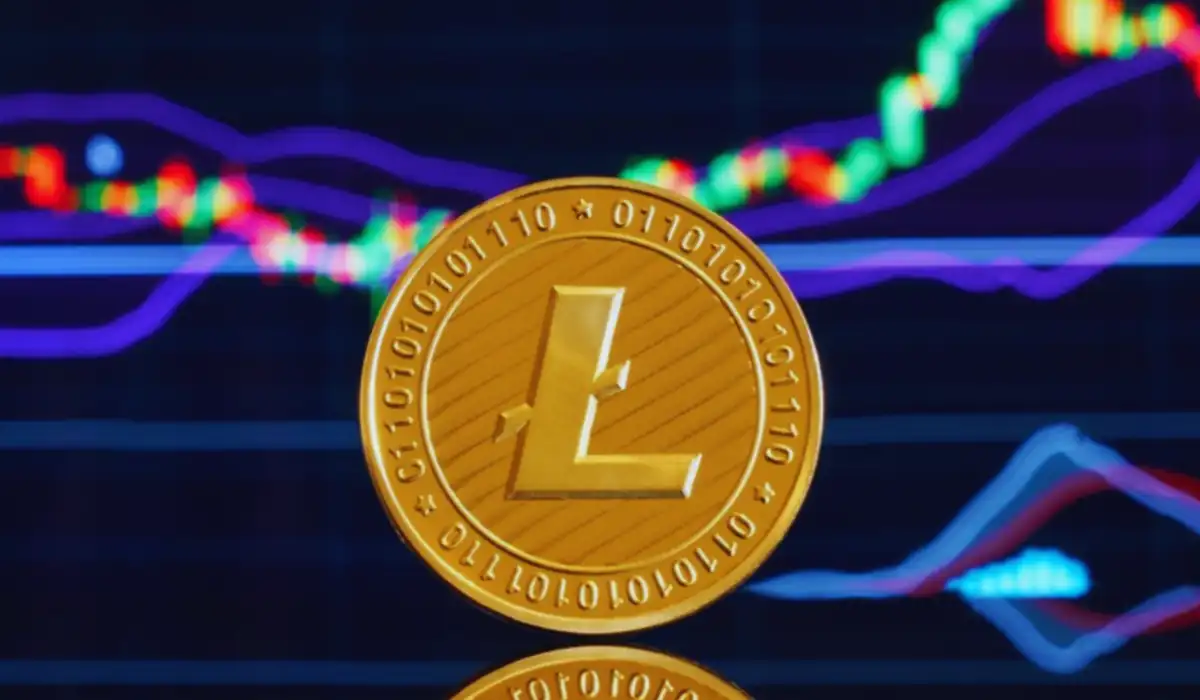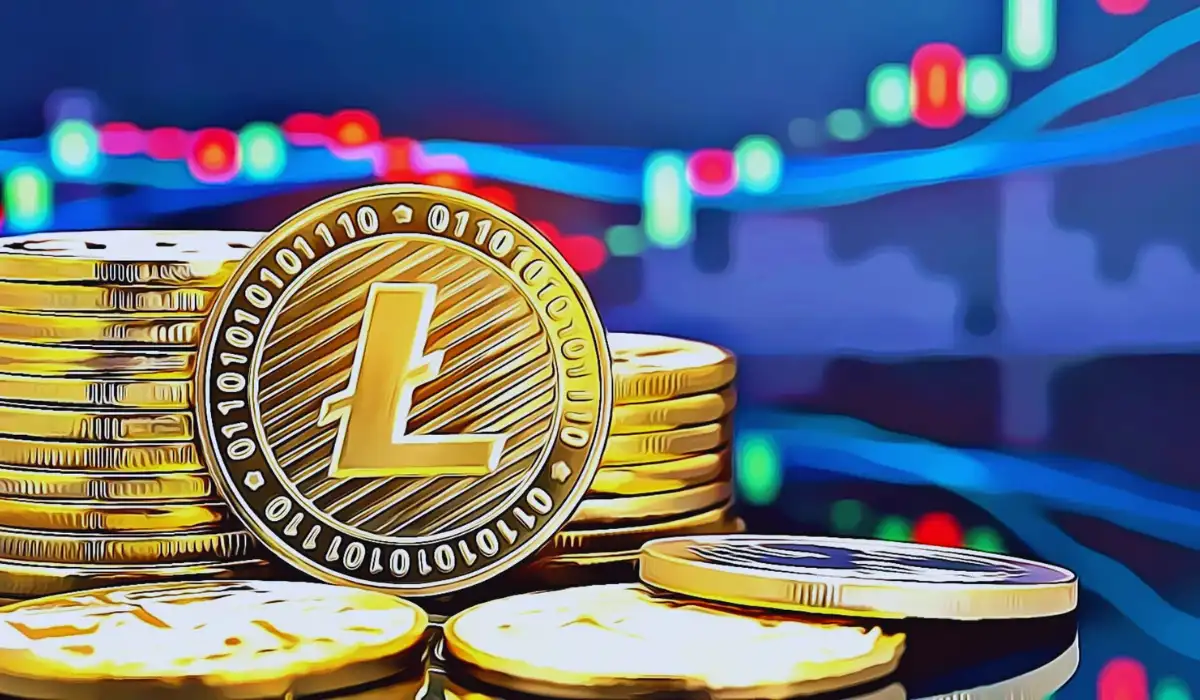Litecoin’s upcoming halving is generating a buzz among people, with implications distinct from those of Bitcoin. People are comparing it to Bitcoin’s continuous halving. However, Litecoin’s halving is unique in the market. Litecoin is the crypto that came just after the launch of Bitcoin; it can be ranked as the oldest crypto after the pioneering Bitcoin. Through this article, we will provide you with information on the Litecoin halving, along with its definition, past pricing fluctuations, and strategic trading considerations.
What is Litecoin?

Litecoin (LTC) serves as a peer-to-peer digital currency that runs on a bitcoin-like open-source platform. It is decentralized by design, with the network managing the transactions, balances, and issuances. The production of bitcoin is similar to that of bitcoin; it is obtained through mining, a process of solving mathematical problems with cryptographic hash functions. Another way to acquire bitcoin is by exchanging the currency for an equal value with fiat money or another cryptocurrency such as bitcoin through cryptocurrency exchanges. Litecoin has similar security and decentralization features just like Bitcoin, but it only requires fewer resources than Bitcoin, as Bitcoin works on the SHA 256 algorithm, and Litecoin has a more intensive algorithm called script.
What is Litecoin halving?
Litecoin halving is a planned occurrence happening every 4 years, or every 840,000 blocks, that will decrease the reward for the miners for mining the Litecoin in half. Litecoin is a disinflationary cryptocurrency due to the process of Litecoin. This mechanism is integrated into the built-in network of Litecoin to put the supply of LTC in check and in control. It is coded into a deflationary policy. Litecoin was introduced in October 2011. Back then, the reward for the miner was 50 LTC. Halving is a pre-programmed occurrence included in the protocol of Litecoin that decreases the block reward given to the miners.
The first halving of Litecoin happened 4 years later, in 2015, and the reward was decreased by half, to 25 LTC. Later, when the second Litecoin halving event occurred in August 2019, the block reward was again halved into 12.5 LTC. The latest Litecoin halving, which was the third Litecoin halving, happened on 2nd August of 2023, in which the mining reward was reduced to 6.25 from 12.5. The next halving of Litecoin is the fourth Litecoin halving, which will reduce the mining reward from 6.25 to 3.125 Litecoin per block, half of the previous one. This process will continue to happen until the maximum supply of the Litecoin is completed. The supply of Litecoin is said to be 84 million coins.
The working of Litecoin halving
To fully understand the workings of Litecoin halving, let’s talk about how Litecoin works first. Litecoin is almost very similar to the workings of Bitcoin, but both of them operate on different algorithms. Bitcoin operates on a SHA 256 algorithm, which works using the Proof of Work mechanism (Pow). For this SHA 256 algorithm, there is a need for higher computational power. The algorithm used in Litecoin is comparatively less complex and is flexible, called the Scrypt algorithm.
Litecoins are the best-preferred cryptocurrency by users for their daily transaction purposes as it is faster processing than most cryptocurrencies in the market. The quick transfer feature is the major asset of Litecoin and what sets it apart from other cryptocurrencies in the market. The world’s most popular cryptocurrency, bitcoin, takes almost 10 minutes to make a transaction, but Litecoin can make a transaction within just 2.5 minutes.
The working of Litecoin halving is identical to the halving of any other crypto, cutting the reward for mining in half every 4 years. There is how it goes: the miner solves the complicated problem, and as the cryptocurrencies are decentralized, the miners will verify the transaction before adding the Litecoin to the ledger. As they authenticate successfully and add a new block to the blockchain network, the miner will receive the crypto they have just mined as a reward. Every 4 years, or when 840,000 blocks are added to the blockchain, the reward is decreased by 50%, just like in every other crypto mining. This is done due to the limitation in the number of Litecoins and to keep inflation in control. So to maintain the lifespan of the Litecoin, mining fewer Litecoins and adding them to the network helps.
When is the next Litecoin halving?
Recently, Litecoin mining occurred in August of 2023, which was the third Litecoin mining to happen and took place at a block height of 2,520,000. The next Litecoin is scheduled for 2027, which will be a part of the cryptocurrency’s built-in monetary policy. The events happen every four years, or roughly every 840,000 blocks are added to the blockchain.
How the halving affected the pricing of Litecoin before and after?
There are 3 prior examples and data to refer to identify the pattern of Litecoin halving as it has been done three times before, in 2015, 2019, and recently in 2023. The halving of crypto is meant to build an artificial supply shortage, which will be a factor that contributes to the demand growth of Litecoin. The impending reduction in Litecoin’s supply, coupled with steady or increasing demand, may propel the price upward, presenting investors with an opportunity to benefit from the anticipation of scarcity.
The investors are keeping a close eye on the upcoming halving event, anticipating its potential impact on cryptocurrency prices. For those in regions grappling with high inflation, this event takes on added significance. Cryptocurrencies like Litecoin offer financial refuge, shielding the assets from the erosive effects of currency devaluation. Historically, halving has sparked price increases, making them an important moment for investors. By grasping the cyclical nature of these events and past influence on Litecoin’s value, the investors can make an informed decision.
A table representing the block reward along with the year predicted:
| Block Number | Validation Reward | Year |
| 840,000 | 25 LTC | 2015 |
| 1,680,000 | 12.5 LTC | 2019 |
| 2,520,000 | 6.25 LTC | 2023 |
| 3,360,0001 | 3.124 LTC | 2027 |
The Effects of Litecoin Halving on Miners
Since its inception in 2011, Litecoin is one of the cryptocurrencies that is in constant demand. So the Litecoin halving is essential to sustain this demand in the crypto industry. For many miners, Litecoin mining is anticipated to cause market volatility as the event historically triggers price fluctuations. Diverse perceptions exist among the miners on the Litecoin halving. Some among them refrain from doing bitcoin mining, but some of the miners participate in mining, believing that the demand for the Litecoin will increase after mining due to the limit in the supply of Litecoin.
As the opinions vary, the effect on miners of litecoin halving isn’t clear. The effect is the result of depending on several variables, such as market situations, Litecoin’s price, trends, etc. Following the litecoin halving event, block rewards are slashed by 50%, diminishing mining probability. This historically triggers miners, resulting in a decline in network participation. As miners exit, the network’s total computing power, known as the hash rate, plummets.
The reduced hash following the halving event made Bitcoin’s network more vulnerable to 51% attacks and centralized risks, where a dominant group of minors could control the network. However, this volatility also presented opportunities for experienced miners. Some capitalized on market fluctuations by investing in Litecoins at low prices and selling when prices surged.
Conclusion
Litecoin halving is an event that helps to maintain the value and protect the price appreciation of the Litecoin. This event is essential for the longer lifespan of the Litecoin. The recent 3rd Litecoin halving occurred on 2nd August 2024, reducing the reward for Litecoin mining to 6.25 LTC tokens. The upcoming and fourth Litecoin is expected to happen in 2027 at a block height of 3,360,0001, reducing the block reward to 3.124.

